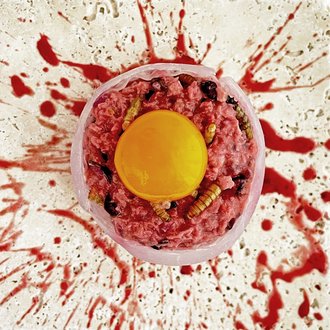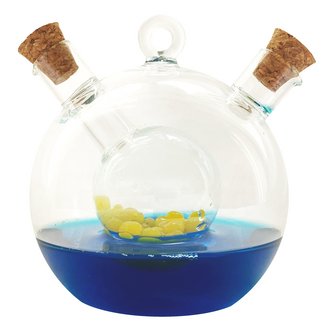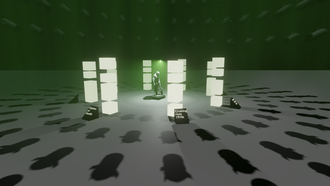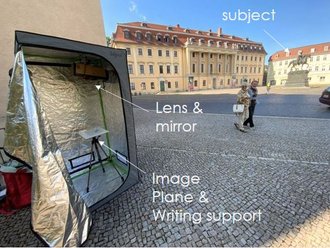Fantasy is Reality: Interfaces for Hanging in There
Description: Fantasy is reality in the world today
I'll keep hanging in there, that's the only way
–Parliament, 1970
Heavy times demand not only solidarity, ingenuity and resilience from us all, but also the capacity to fantasize a different existence thereafter. While societal disruptions resulting from armed conflict, natural disaster, famine and pandemic have accompanied homo sapiens sapiens since time immemorial, the world at present finds itself in the midst of the first generation of ubiquitous global crises to unfold in the post-information age.
Instructor: Vertr.-Prof. Jason Reizner , Professorship Interface Design
Summer Semester 2021
As a novel virus has upended established norms framing how we interact as social creatures in physicality, our abrupt thrust into everyday virtuality over the past year has evidenced our dependence on technologies that have made the quantum leap from science fiction fantasy to quotidian existence. From genomic sequencing to logistics networks to high definition videoconferencing, the contemporary digital infrastructure that underpins the systems keeping us hanging in there also provides a canvas to fantasize about what is yet to come.
This project module provides a platform for artists, designers and architects to hypothesize and explore design fictions centered on virtual, physical and post-physical interactions, cybernetics and participatory interfaces, with a view towards articulating speculative futures that prototype the tomorrow we dread and/or long for.
Through a series of lectures, workshops and targeted discussions, participants will address topics including post-human centered design, telepresence/telerobotics, network cultures, edge computing and distributed computing, machine learning, human and artificial intelligence, generative and autonomous systems, environmental sensing and smart citizenry.
“Feed Waste” by Nik Dommermuth
The concept centers around a design-based research on the possibilities of bioprinting in the reduction of food waste and the introduction of alternative products directly to the consumer. It speculates about a living food waste system for households that is heavily dependent on insects, while also including other products listed below.
i mealworms and termites feeding on our food, paper and plastic waste.
ii by-products of regular food preparation such as peelings and cuttings.
iii microalgae and derived products such as agar and sodium-algenate.
iv microgreens such as broccoli or radish grown from printable substrate.
Unavoidable food waste, moldy or leftover food, but also paper and plastic waste, is fed directly to insects, which can be printed into a variety of alternative meat and fish products. Food that lost its freshness, by-products of regular food preparation and other commonly unused but edible components can be printed directly with the help of a variety of creative recipes. Microalgae is mainly used to nutritionally enhance products and dishes. Derived products such as agar-agar can be used as a printable substrate to grow a variety of microgreens. The role of bioprinting is – besides abstraction – the reduction of waste due to on demand production and the introduction of smaller portions that fight our habit of overeating.
But how to make these things palatable? What began as a rather objective task, turned quickly into a quite personal exploration of curiosity and disgust. Based on the assumption that the abstraction of meat products through their industrialisation and the later abstraction of whole dishes through molecular gastronomy, which flourished in the 90s, led to a wider acceptance of food far from its original form, abstraction might also be the formula to introduce and establish insects, algae and waste to the food market. By transforming them into conventional dishes of our food culture – putting something exotic into something familiar –, they become accessible. As a little twist, each dish deals with the negative effects of the traditionally used ingredients or materials. The aversion that would otherwise apply to alternative foods is thereby displaced. The approach combines speculative design with critical views towards our habits of consumption.
“Pro-jection/Ob-jection” by Timo Bechert
In the 2020 pandemic year, there have been numerous protests against statues around the world and has shed light on the controversial use/misuse of historical memory. These controversies call for action to recontextualize the legacies of historical figures. Pro-jection/Ob-jection is a temporary installation, that aims to create a space for rethinking and discussing entrenched notions of historical figures. This space will be both real and virtual, as the installation oscillates between history, reality and fantasy.
In the first part of the installation, participants will have the opportunity to deal with a specific historical figure. In a virtual reality environment that recreates episodes from the life of the figure the viewer is informed about controversial aspects of the life of the historical figure.
The second part of this installation consists of projecting the opinion of the viewers onto the statue of the historical figure. This is realized by a camera obscura. All opinions are collected on transparent paper. This cathartic process can be compared to graffiti art.









